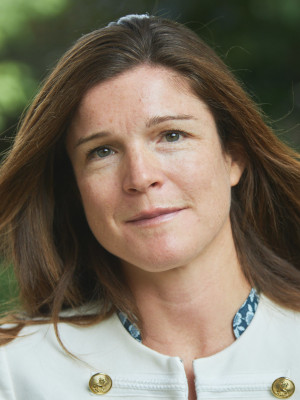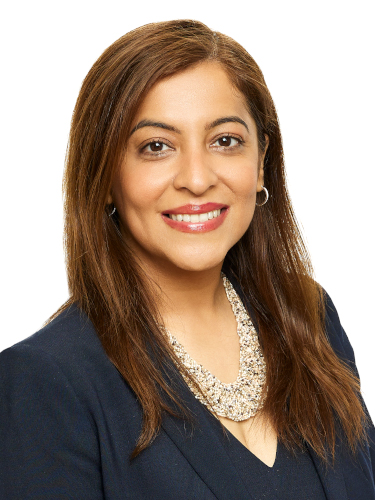This is the first article in our October special report on managing family businesses and family offices across the generations.
The family office model’s traditional focus on asset allocation and ensuring financial security is changing. Wealth management is still its core service, but clients are also increasingly seeing it as a way to ensure family cohesion and pave the way for smooth succession planning.
Call it “family glue.”

“What’s very interesting is that more families are complementing their traditional partners—especially banks—with more of the holistic, trusted-partner kind of relationships,” says Aurélie Jaclot, chief executive officer at Sagard Wealth in Montreal. “It’s accelerating right now because a very large amount of wealth is being generated, and also because of the level of assets transmitted to the next generation.”
Multi-family offices are certainly working hard to deliver value, says Adam Hoffman, CEO of Pinnacle Wealth in Calgary.
“Long term, the demographic trend is on, and MFO firms are aware that exceptional client service can be achieved by supporting family wealth transitions,” he says. “The process is long, and the clients really value the support in the journey.”
Trust, support, education, transition: These are the new buzzwords at family offices as the emphasis shifts to bringing families together and emphasizing human and social capital.
Some in-house teams believe they can deliver these services because they have the luxury of more dedicated time, compared to third-party providers who might charge by the hour.
Richa Arora, partner and family enterprise leader with PwC in Toronto, says that older members of the family have a strong desire to ensure that wealth is sustained for future generations and that what they’ve built is meaningfully supporting those generations.
In younger generations, however, “there is a desire to align wealth with values and impact,” she adds.
“When families approach their family office with these objectives, we need to be prepared to have deep conversations about purpose, ownership mindset, legacy and family harmony,” says Arora.
Bringing everyone to the table
Enterprising families are becoming more aware of the effectiveness of multi-family offices in supporting succession, says Hoffman. Increasing numbers of MFOs now include family meeting facilitation, he says, with dedicated teammates assigned to the family governance needs of their clients.

“One clear way to see this rising prominence of the role of MFOs in wealth transition is the growing number of FEA-designated professionals,” he says of the Family Enterprise Advisor designation. “Their firms and these professionals see long-term family success as critical—important enough to gain a professional designation on the topic.”
Paving the way for a problem-free succession means everyone needs to be involved, says Jaclot. And that act of bringing everyone to the table becomes the glue that holds the family together.
“All of the family members should be included in that multi-generational reflection, for obvious reasons,” she says. This includes patriarchs, matriarchs and “future stewards for that growth.”
Another approach Sagard favours is the creation of a “mini board” of accountants, tax planners, estate planners, family advisors, family enterprise advisors and philanthropic specialists to foster a collaborative environment, rather than opting for a siloed approach. By bringing all these resources together, younger generations can observe everyone collaborating—and become educated about the process.
“It’s extremely important that we involve the children, the next generations of our client families, as early on as possible, so that they learn to ask questions of accountants, tax planners and family advisors,” Jaclot says.
Yet another benefit of this collaborative approach means family office clients can create partnerships with other clients, which Jaclot refers to as the “power of a dynamic ecosystem.”
“Our job is really to ensure that we create bridges between those families, because it will create a lot of synergies between different businesses,” she says.
MFOs still working through delivery
Some multi-family offices struggle to deliver a holistic range of services, Hoffman says.
“I think for-profit MFOs have a difficult time determining how much to deliver with their in-house team. Sometimes the best decision is for the MFO to admit their in-house resources are only a partial solution and outside resources should be partnered with,” he says.

Arora agrees. “In areas where family offices are not well suited, they can still highlight their role as a central trusted advisor by referring families to external supports.”
As for what they’re good at, family offices are in a unique position to support families, facilitate deeper conversations and align the outcomes with their investment management, says Arora.
“This could look like defining a legacy that multiple generations feel connected to, holding family meetings to support connection, or collaborating on philanthropic endeavours,” she adds.
Says Hoffman: “The best family offices excel at family wealth transitions because they recognize that maintaining the client for decades requires this skill and focus.”
Anna Sharratt is a business and health reporter and editor with more than 20 years of experience. Based in Toronto, she has written for Canadian Family Offices since 2021. A regular contributor to the Globe and Mail, she has written for Inc.com, Forbes, Business Insider, Canadian Business, MoneySense, the National Post, The Toronto Star and other publications. She is the former managing editor of smallbiz.ca, health editor of Chatelaine and senior health writer for the CBC.
The Canadian Family Offices newsletter comes out on Sundays and Wednesdays. If you are interested in stories about Canadian enterprising families, family offices and the professionals who work with them, but like your content aggregated, you can sign up for our free newsletter here.
Please visit here to see information about our standards of journalistic excellence.




